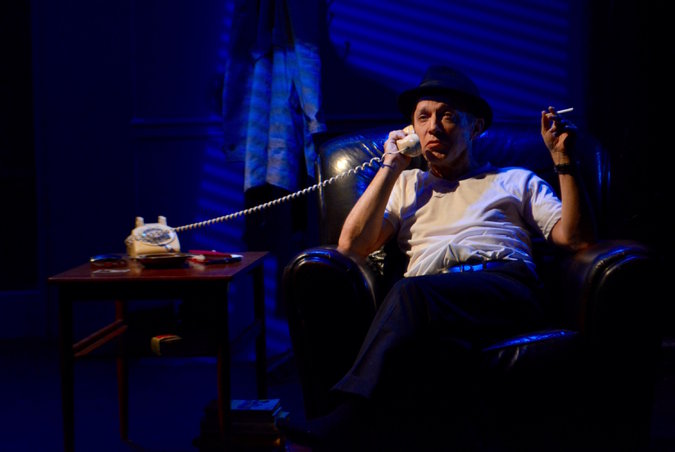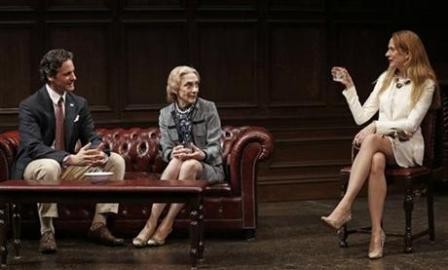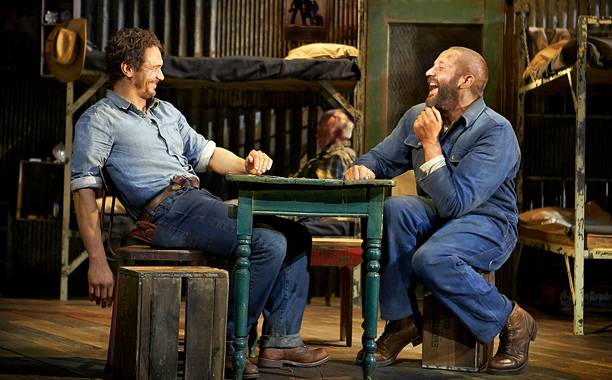

by Rudy Gerson
Paul Auster’s 1985 novel City of Glass is a creative inquiry into identity, validity, and language’s inability to represent either. The novel stands tall in literary circles as a reminder that meaning eludes always. While an ambitious (and admittedly high-brow) pursuit, the thematic premise holds that an author’s words never can represent the whole of reality. By all accounts, the novel succeeds in literary circles, but as Hitchhiker’s Guide to the Galaxy’s cinematic flop teaches us: good books do not easily translate across mediums.
The book provides material already abstracted, ready and willing for interpretation. The story begins when the main character, a writer named Quinn, receives a phone call from a man who mistakes him for a detective named Paul Auster. For no particular or explicit reason, Quinn succumbs. Yes, he agrees that he’s Auster, and yes he will take the case. Quinn meets the mysterious caller at an apartment the next day and is asked to follow a man named Peter Stillman, who the caller expects is plotting to murder at any moment — “a glorified tail job.”
What follows is a story of false exits, twists, turns and unsatisfied developments that leaves one feeling as exhausted as when an expected 30-minute subway commute becomes a two hour debacle in the blink of an eye. At least, that’s what the novel evokes. City of Glass, the play (now playing at the New Ohio theater in the West Village), however, falls flat as Edward Einhorn, the director/adapter, manages to take one of the least literal texts in modern literature and stage the whole affair verbatim. The obscurity and “meta”-ness that make the novel so powerful are thrown away in favor of a play that sticks with a clear and singular message.
Robert Honeywell’s Quinn is thoughtfully articulate and inquisitive. As the only actor with dialogue, the adaptation asks him to maintain energy and attention for 90 minutes;, and to his credit, he displays delicate craft and agility. Alongside him, Mateo Moreno shines in his physical transfigurations, as old man, lunatic son, and garbage collector. Without even one line, Moreno’s physical prowess commands attention. Regardless, no amount of acting could salvage the adaptation, which is both conceptually safe and theatrically tired. There are many models of devising work from text that may have worked better here.
Alternatively, a director need only cherry pick his/her favorite moments in order to create a landscape of metaphors, feelings, and images from the city right outside the theater’s walls. The novel is famously—and significantly—set in New York City, which would have beenis as juicy and easy of a connection to make as any if the creative team had chosen to link the fictional city streets to the very streets the novel is based upon. Layered video, street sounds, documentary findings:as the novel diverges into many 5-page tributaries of solipsisms, an adaptation could have done the same. One scene has old man Peter Stillman discussing why his latest project must take place in New York:
I have come to New York because it is the most forlorn of places, the most abject. The brokenness is everywhere, the disarray is universal. You have only to open your eyes to see it. The broken people, the broken things, the broken thoughts. The whole city is a junk heap. It suits my purpose admirably. . . Each day I go out with my bag and collect objects that seem worthy of investigation.
Had the director paid any mind to the very streets outside the rehearsal room, he would have felt the need to bring New York of the now onto the stage. Objects are plenty, and readily available. The novel rests on figurative language, whereas the theater is of image, object, and sound; it could (or should) invite the audience to feel the City of Glass all around us. The theater industry is too old, gray, and tired of a scene to think that anything else but immediacy will make us relevant and worthwhile.
A prime example of Einhorn’s linear approach is how he stages Stillman’s discussion of the word “umbrella.” To Stillman, that we still use the word “umbrella” when describing an umbrella that is broken highlights the great tragedy of language: since the umbrella no longer serves its function of keeping the holder dry, the object is no longer an umbrella.
Unsurprisingly, during this digression Quinn violently dis-members an umbrella. What about broken light bulbs? Out-of-date phones? Any object that wasn’t explicitly mentioned would have opened up the metaphor to individual interpretation.
As a City of Glass fan-boy, I held high hopes that Untitled Theater Company No. 61’s theatrical adaptation would live in this realm of ambiguity and relevance, finding a comfortable corner to nestle in while the audience could watch the rules of the fictional world disintegrate before our eyes and ears. Happily, musical composition by Freddi Prince provides the much-needed mystery and romance. As well, Christopher Heilman as scenic designer places beautiful translucent industrial windows center stage to give dimension to the difficult space.
I go to the theater because it can make metaphor out of reality, ritual out of everyday life, and is irrevocably of the now in place and time. Reading a book is isolating and escapist; and, yes, it can transform one person. But the theatre, through all senses, can make transformation collective and social.
This play felt like a staged reading, with concrete choreography going clunk, clunk, clunk, and an interpretation hitting me over the head like a hammer. But I suspect that if Auster had his way the hammer might have felt more like a ham sandwich. For this reviewer, it might have made more sense.
City of Glass. Through March 12 at The New Ohio (154 Christopher Street, between Washington and Greenwich Streets). www.untitledtheater.com or www.newohiotheatre.org






















